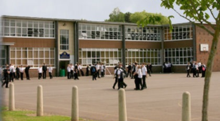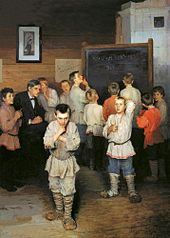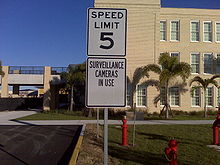
School
Background Information
SOS believes education gives a better chance in life to children in the developing world too. Visit the SOS Children website at http://www.soschildren.org/

A school is an institution designed for the teaching of students (or "pupils") under the direction of teachers. Most countries have systems of formal education, which is commonly compulsory. In these systems, students progress through a series of schools. The names for these schools vary by country (discussed in the Regional section below), but generally include primary school for young children and secondary school for teenagers who have completed primary education. An institution where higher education is taught, is commonly called a university college or university.
In addition to these core schools, students in a given country may also attend schools before and after primary and secondary education. Kindergarten or pre-school provide some schooling to very young children (typically ages 3–5). University, vocational school, college or seminary may be available after secondary school. A school may also be dedicated to one particular field, such as a school of economics or a school of dance. Alternative schools may provide nontraditional curriculum and methods.
There are also non-government schools, called private schools. Private schools may be required when the government does not supply adequate, or special education. Other private schools can also be religious, such as Christian schools, hawzas, yeshivas, and others; or schools that have a higher standard of education or seek to foster other personal achievements. Schools for adults include institutions of corporate training, Military education and training and business schools.
In homeschooling and online schools, teaching and learning take place outside of a traditional school building.
Etymology
The word school derives from Greek σχολή (scholē), originally meaning "leisure" and also "that in which leisure is employed", but later "a group to whom lectures were given, school".
History and development of schools
The concept of grouping students together in a centralized location for learning has existed since Classical antiquity. Formal schools have existed at least since ancient Greece (see Academy), ancient Rome (see Education in Ancient Rome) ancient India (see Gurukul), and ancient China (see History of education in China). The Byzantine Empire had an established schooling system beginning at the primary level. According to Traditions and Encounters, the founding of the primary education system began in 425 AD and "... military personnel usually had at least a primary education ...". The sometimes efficient and often large government of the Empire meant that educated citizens were a must. Although Byzantium lost much of the grandeur of Roman culture and extravagance in the process of surviving, the Empire emphasized efficiency in its war manuals. The Byzantine education system continued until the empire's collapse in 1453 AD.
Islam was another culture that developed a school system in the modern sense of the word. Emphasis was put on knowledge, which required a systematic way of teaching and spreading knowledge, and purpose-built structures. At first, mosques combined both religious performance and learning activities, but by the 9th century, the Madrassa was introduced, a proper school that was built independently from the mosque. They were also the first to make the Madrassa system a public domain under the control of the Caliph. The Nizamiyya madrasa is considered by consensus of scholars to be the earliest surviving school, built towards 1066 AD by Emir Nizam Al-Mulk.
Under the Ottomans, the towns of Bursa and Edirne became the main centers of learning. The Ottoman system of Külliye, a building complex containing a mosque, a hospital, madrassa, and public kitchen and dining areas, revolutionized the education system, making learning accessible to a wider public through its free meals, health care and sometimes free accommodation.
The 19th century historian, Scott holds that a remarkable correspondence exists between the procedure established by those institutions and the methods of the present day. They had their collegiate courses, their prizes for proficiency in scholarship, their oratorical and poetical contests, their commencements and their degrees. In the department of medicine, a severe and prolonged examination, conducted by the most eminent physicians of the capital, was exacted of all candidates desirous of practicing their profession, and such as were unable to stand the test were formally pronounced incompetent.
In Europe, universities emerged during the 12th century; here, scholasticism was an important tool, and the academicians were called schoolmen. During the Middle Ages and much of the Early Modern period, the main purpose of schools (as opposed to universities) was to teach the Latin language. This led to the term grammar school, which in the United States informally refers to a primary school, but in the United Kingdom means a school that selects entrants based on ability or aptitude. Following this, the school curriculum has gradually broadened to include literacy in the vernacular language as well as technical, artistic, scientific and practical subjects.
Obligatory school attendance became common in parts of Europe during the 18th century. In Denmark-Norway, this was introduced as early as in 1739-1741, the primary end being to increase the literacy of the almue, i.e. the "regular people". Many of the earlier public schools in the United States and elsewhere were one-room schools where a single teacher taught seven grades of boys and girls in the same classroom. Beginning in the 1920s, one-room schools were consolidated into multiple classroom facilities with transportation increasingly provided by kid hacks and school buses.
Regional terms


The use of the term school varies by country, as do the names of the various levels of education within the country.
United Kingdom and Commonwealth of Nations
In the United Kingdom, the term school refers primarily to pre-university institutions, and these can, for the most part, be divided into pre-schools or nursery schools, primary schools (sometimes further divided into infant school and junior school), and secondary schools. Various types of secondary schools in England and Wales include grammar schools, comprehensives, secondary moderns, and city academies. In Scotland, while they may have different names, all Secondary schools are the same, except in that they may be funded by the state, or independently funded (see next paragraph). It is unclear if "Academies", which are a hybrid between state and independently funded/controlled schools and have been introduced to England in recent years, will ever be introduced to Scotland. School performance in Scotland is monitored by Her Majesty's Inspectorate of Education. Ofsted reports on performance in England and Estyn reports on performance in Wales.
In the United Kingdom, most schools are publicly funded and known as state schools or maintained schools in which tuition is provided free. There are also private schools or independent schools that charge fees. Some of the most selective and expensive private schools are known as public schools, a usage that can be confusing to speakers of North American English. In North American usage, a public school is one that is publicly funded or run.
In much of the Commonwealth of Nations, including Australia, New Zealand, India, Pakistan, Bangladesh, Sri Lanka, South Africa, Kenya, and Tanzania, the term school refers primarily to pre-university institutions.
India

In ancient India, schools were in the form of Gurukuls. Gurukuls were traditional Hindu residential schools of learning; typically the teacher's house or a monastery. During the Mughal rule, Madrasahs were introduced in India to educate the children of Muslim parents. British records show that indigenous education was widespread in the 18th century, with a school for every temple, mosque or village in most regions of the country. The subjects taught included Reading, Writing, Arithmetic, Theology, Law, Astronomy, Metaphysics, Ethics, Medical Science and Religion.
Under the British rule in India, Christian missionaries from England, USA and other countries established missionary and boarding schools throughout the country. Later as these schools gained in popularity, more were started and some gained prestige. These schools marked the beginning of modern schooling in India and the syllabus and calendar they followed became the benchmark for schools in modern India. Today most of the schools follow the missionary school model in terms of tutoring, subject / syllabus, governance etc.with minor changes. Schools in India range from schools with large campuses with thousands of students and hefty fees to schools where children are taught under a tree with a small / no campus and are totally free of cost. There are various boards of schools in India, namely Central Board for Secondary Education (CBSE), Council for the Indian School Certificate Examinations (CISCE), Madrasa Boards of various states, Matriculation Boards of various states, State Boards of various boards, Anglo Indian Board, and so on. The typical syllabus today includes Language(s), Mathematics, Science - Physics, Chemistry, Biology, Geography, History, General Knowledge, Information Technology / Computer Science etc.. Extra curricular activities include physical education / sports and cultural activities like music, choreography, painting, theatre / drama etc.
Europe
In much of continental Europe, the term school usually applies to primary education, with primary schools that last between four and nine years, depending on the country. It also applies to secondary education, with secondary schools often divided between Gymnasiums and vocational schools, which again depending on country and type of school educate students for between three and six years. In Germany students graduating from Grundschule are not allowed to directly progress into a vocational school, but are supposed to proceed to one of Germany's general education schools such as Gesamtschule, Hauptschule, Realschule or Gymnasium. When they leave that school, which usually happens at age 15-19 they are allowed to proceed to a vocational school. The term school is rarely used for tertiary education, except for some upper or high schools (German: Hochschule), which describe colleges and universities.
In Eastern Europe modern schools (after World War II), of both primary and secondary educations, often are combined, while secondary education might be split into accomplished or not. The schools are classified as middle schools of general education and for the technical purposes include "degrees" of the education they provide out of three available: the first - primary, the second - unaccomplished secondary, and the third - accomplished secondary. Usually the first two degrees of education (eight years) are always included, while the last one (two years) gives option for the students to pursue vocational or specialized educations.
North America and the United States
In North America, the term school can refer to any educational institution at any level, and covers all of the following: preschool (for toddlers), kindergarten, elementary school, middle school (also called intermediate school or junior high school, depending on specific age groups and geographic region), senior high school, college, university, and graduate school.
In the US, school performance through high school is monitored by each state's Department of Education. Charter schools are publicly funded elementary or secondary schools that have been freed from some of the rules, regulations, and statutes that apply to other public schools. The terms grammar school and grade school are sometimes used to refer to a primary school.
School ownership and operation
Many schools are owned or funded by states. Private schools operate independently from the government. Private schools usually rely on fees from families whose children attend the school for funding; however, sometimes such schools also receive government support (for example, through School vouchers). Many private schools are affiliated with a particular religion; these are known as parochial schools.
Starting a school
The Toronto District School Board is an example of a school board that allows parents to design and propose new schools.
When designing a school, factors that need to be decided include:
- Goals: What is the purpose of education, and what is the school's role?
- Governance: Who will make which decisions?
- Parent involvement: In which ways are parents welcome at the school?
- Student body: Will it be, for example, a neighbourhood school or a specialty school?
- Student conduct: What behaviour is acceptable, and what happens when behaviour is inappropriate?
- Curriculum: What will be the curriculum model, and who will decide on curricula?
Components of most schools

Schools are organized spaces purposed for teaching and learning. The classrooms, where teachers teach and students learn, are of central importance, but typical schools have many other areas, which may include:
- Cafeteria (Commons), dining hall or canteen where students eat lunch and often breakfast and snacks.
- Athletic field, playground, gym, and/or track place where students participating in sports or physical education practice
- Auditorium or hall where student theatrical and musical productions can be staged and where all-school events such as assemblies are held
- Office where the administrative work of the school is done
- Library where students ask librarians reference questions, check out books and magazines, and often use computers
- Specialized classrooms including laboratories for science education
- Computer labs where computer-based work is done and the internet accessed
School security
The safety of staff and students is increasingly becoming an issue for school communities, an issue most schools are addressing through improved security. After mass shootings such as the Columbine High School massacre and the Virginia Tech incident (and more recently the Sandy Hook Elementary School shooting) many school administrators in the United States have created plans to protect students and staff in the event of a school shooting. Some have also taken measures such as installing metal detectors or video surveillance. Others have even taken measures such as having the children swipe identification cards as they board the school bus. For some schools, these plans have included the use of door numbering to aid public safety response.
Other security concerns faced by schools include bomb threats, gangs, vandalism, and bullying.
School health services
School health services are services from medical, teaching and other professionals applied in or out of school to improve the health and well-being of children and in some cases whole families. These services have been developed in different ways around the globe but the fundamentals are constant: the early detection, correction, prevention or amelioration of disease, disability and abuse from which school aged children can suffer.
Online schools and classes
Some schools offer remote access to their classes over the Internet. Online schools also can provide support to traditional schools, as in the case of the School Net Namibia. Some online classes also provide experience in a class, so that when people take them, they have already been introduced to the subject and know what to expect, and even more classes provide High School/College credit allowing people to take the classes at their own pace. Many online classes cost money to take but some are offered free.
Stress
As a profession, teaching has levels of work-related stress (WRS) that are among the highest of any profession in some countries, such as the United Kingdom and the United States. The degree of this problem is becoming increasingly recognized and support systems are being put into place. Teacher education increasingly recognizes the need to train those new to the profession to be aware of and overcome mental health challenges they may face.
Stress sometimes affects students more severely than teachers, up to the point where the students are prescribed stress medication. This stress is claimed to be related to standardized testing, and the pressure on students to score above average. See Cram school.
Discipline
Schools and their teachers have always been under pressure — for instance, pressure to cover the curriculum, to perform well in comparison to other schools, and to avoid the stigma of being "soft" or "spoiling" toward students. Forms of discipline, such as control over when students may speak, and normalized behaviour, such as raising a hand to speak, are imposed in the name of greater efficiency. Practitioners of critical pedagogy maintain that such disciplinary measures have no positive effect on student learning. Indeed, some argue that disciplinary practices detract from learning, saying that they undermine students' individual dignity and sense of self-worth—the latter occupying a more primary role in students' hierarchy of needs.







